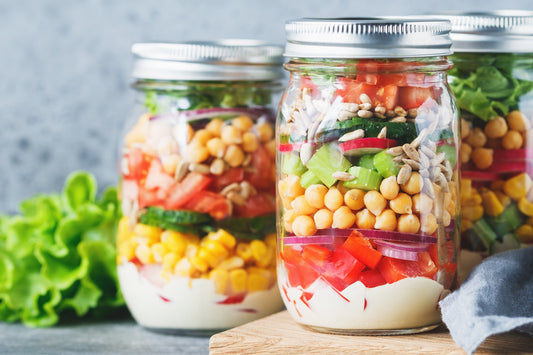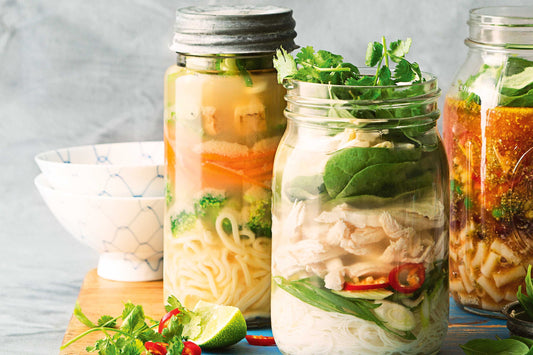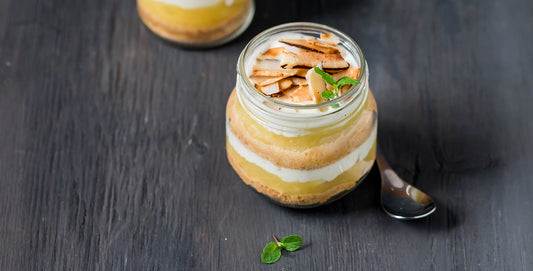Many people habitually use aluminum foil to assist with cooking in the oven, but they may not know whether it is truly safe. In the following article, KimEcopak will answer the question "Can you put aluminum foil in the oven?" and, if so, how to use it safely.
Can You Put Aluminum Foil In The Oven?
Yes, aluminum foil can be put in the oven. Since aluminum foil is made of metal, it heats up and becomes a conductor of heat when placed in the oven. It can be used to cover dishes while cooking or to line baking trays or pans. This type of paper can help prevent pie crusts from burning and also help dishes retain moisture.

When Should You Not Use Aluminum Foil in the Oven?
- Do not use aluminum foil when cooking acidic foods: Some acidic foods like tomatoes and citrus fruits can interact with aluminum foil, causing it to break down or create small holes.
- Do not use aluminum foil when baking cookies: Baking cookies on aluminum foil can cause them to cook unevenly. Since aluminum foil is a conductor of heat, any part of the cookie that directly touches the foil will cook faster and may burn. Instead of using aluminum foil, you can choose to use parchment paper.
- Avoid using aluminum foil if you are trying to minimize aluminum exposure: Some studies have shown that aluminum foil can leach aluminum into food, although in small amounts. The amount of aluminum absorbed by your body will depend on the cooking temperature and type of food.
How to Safely Use Aluminum Foil in the Oven
- Minimize contact with heating elements: Ensure the aluminum foil does not touch the heating elements.
- Avoid foil contact with oven walls: Do not let aluminum foil come into contact with the oven walls.
- Prevent grease overflow: Avoid situations where grease might overflow onto the foil. Excessive grease can spill out of the oven, and grease on very hot foil can lead to burning.
- Do not wrap food too tightly: Wrapping food too tightly in aluminum foil can impede hot air circulation in the oven, leading to uneven cooking and extended cooking times.
- Do not reuse aluminum foil: Use high-quality, sufficiently thick aluminum foil for each use.
- Prevent food from sticking: If you do not want food to stick to the aluminum foil, spray non-stick spray or apply a layer of oil on the foil.
Alternatives to Aluminum Foil
Instead of using aluminum foil, you can opt for the following alternatives:
- Parchment paper: Parchment paper is non-stick, grease-resistant, and moisture-resistant. It is used to line baking trays when baking cookies or when needing a non-stick surface for cakes and pastries. However, note that parchment paper can withstand lower temperatures than aluminum foil, up to about 220-250 degrees Celsius, and it can catch fire if it touches the heating elements.
- Non-stick steel or aluminum baking trays: Choose those that can withstand high temperatures from 100-250 degrees Celsius or more. If using regular baking trays, apply a non-stick coating such as butter or oil before use.
- Ceramic, porcelain, or glass baking trays: These are also good options, but avoid thermal shock or exposing them to temperatures beyond their tolerance, as this can cause cracking or breaking.
Why Does Aluminum Foil Darken When Baking in the Oven?
If you notice that aluminum foil is darkening while cooking, don't worry. Aluminum foil can sometimes darken or change color during the baking process, which is considered normal. This darkening is the accumulation of aluminum oxide from the moisture buildup of the covered food.
Can Aluminum Foil Catch Fire?
Aluminum foil does not easily catch fire but can melt at very high temperatures (around 1220°F or 660°C). Therefore, if your recipe requires a high oven temperature, such as 450°F, you can safely use aluminum foil. However, you should consider using heavy-duty aluminum foil for safety.

Conclusion
This article answers the question of whether aluminum foil can be put in the oven and provides some alternatives to aluminum foil. We hope this article provides you with the necessary and useful information. Thank you for taking the time to read this article with KimEcopak!
Related Articles:









